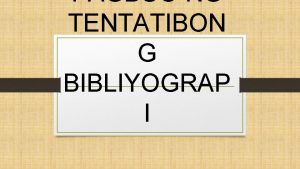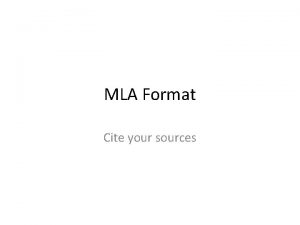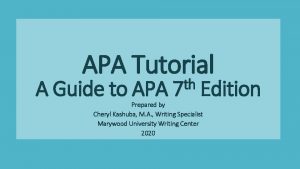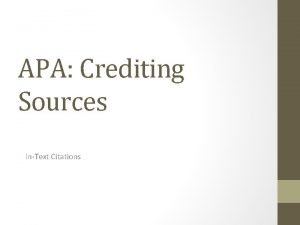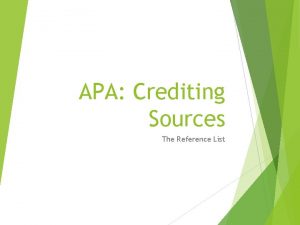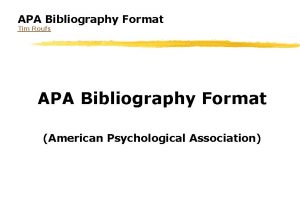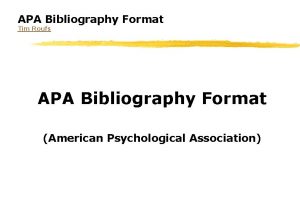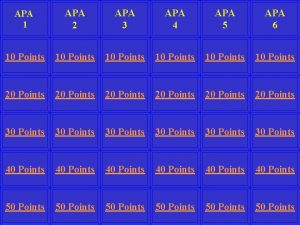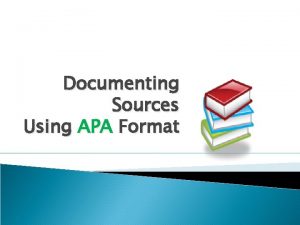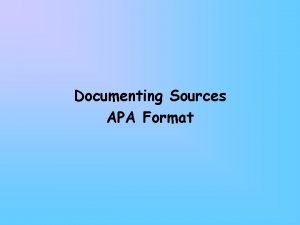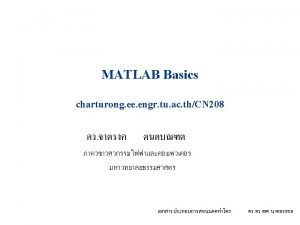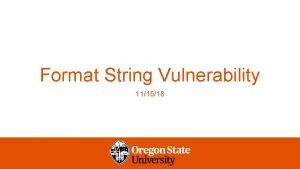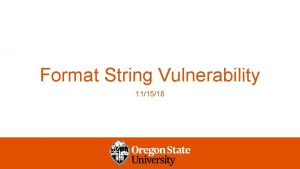APA FORMAT CREDITING SOURCES A tutorial prepared for















- Slides: 15

APA FORMAT CREDITING SOURCES A tutorial prepared for Florida Technical College Students

Why & When do we need to cite? • Help readers place your contribution in context • Cite others’ work that you are directly using (i. e. ideas) • You have read the work • Strengthen your research • The amount of sources depends on the extent of work

Plagiarism • Writers “do not present the work of another as if it were their own work” (APA, 2010, p. 16). • Credit work by quoting, paraphrasing, and/or summarizing. • Keep notes that identify each idea with accurate bibliographical information.

Quoting • Verbatim • Include the author, year it was published, and pagination • If using online source, then include paragraph number • Within text if fewer than 40 words • Block format if more than 40 words • Limit quotations

Citing • Smith (2015) presented …. • According to Smith (2015), …. • In her research, Smith (2015) found …. …. . (p. 20). • (Smith, 2015, p. 15) • (Smith, 2015, par. 20)

Less than 40 words

Block format Source: http: //blog. apastyle. org/files/block-quotations. pdf

Paraphrasing • Ideas in our own words. • Usually a sentence. • Length might differ. • Acknowledge the author, year, and page/paragraph number.

Summarizing • Providing the main idea of the sources. • In your own words. • Cite the author and year.

Quoting, Paraphrasing, and Summarizing

Reference Components • Author’s name Last Name, I. • Publication date (2015). • Title of the Work • Publication data • Alphabetical Order Bandura, A. J. (1977). Social learning theory. Englewood Cliffs, NJ: Prentice Hall.

Basic Format • Double space • Indent second line and subsequent lines • Organize in alphabetical order (by author) • List all authors • Italicize the journal or magazine title and volume # • Italicize book title

Sample

Types of References • 77 different types of reference entries ü Books § Whole book § Editions § Chapters ü Periodicals § Editorials § Magazines (paper or online) § Newspapers (paper or online) § Journals (paper or online) ü Videos ü Electronic § Webpage § Website

Source: apastyle. org
 Print sources and web sources
Print sources and web sources Importance of water source
Importance of water source Ano ang dapat tandaan sa pag sulat ng bibliograpiya
Ano ang dapat tandaan sa pag sulat ng bibliograpiya How to cite sources mla?
How to cite sources mla? Apa 7 sources
Apa 7 sources Kontinuitetshantering
Kontinuitetshantering Typiska drag för en novell
Typiska drag för en novell Nationell inriktning för artificiell intelligens
Nationell inriktning för artificiell intelligens Returpilarna
Returpilarna Varför kallas perioden 1918-1939 för mellankrigstiden
Varför kallas perioden 1918-1939 för mellankrigstiden En lathund för arbete med kontinuitetshantering
En lathund för arbete med kontinuitetshantering Kassaregister ideell förening
Kassaregister ideell förening Tidbok
Tidbok Anatomi organ reproduksi
Anatomi organ reproduksi Vad är densitet
Vad är densitet Datorkunskap för nybörjare
Datorkunskap för nybörjare


